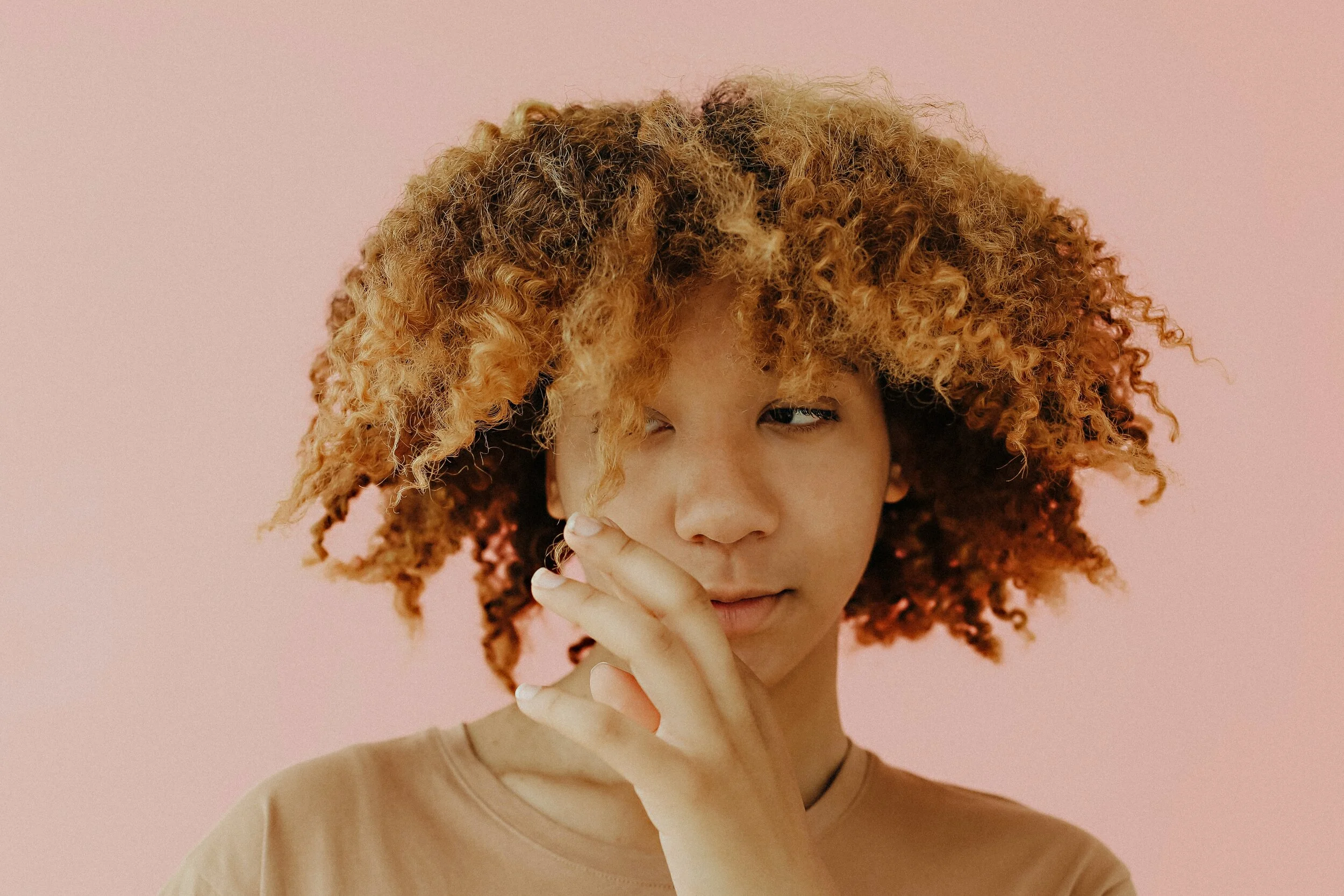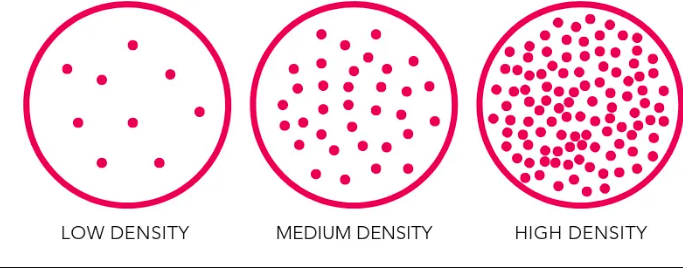What is Hair Density?
On my hair journey, I was always confused when people told me I had thick hair because when I straightened it my hair always fell limp and I was left looking like I had three strands of hair like Homer Simpson. No offense to him.
But once I learned exactly what hair density was and that I had high density hair, I finally understood exactly why my hair behaved the way that it did and how I could properly care for it so it would always look good.
So lets get into it…
What Does Hair Density Mean?
Hair density refers to how closely your strands are packed together on your head.
Hair density increase or decrease can be affected by your genetics, hair texture, porosity and width.
In this article you will learn all about hair density and how to use the hair density test to identify your own.
Knowing your density will help you choose the right products, styles and cuts to maintain and work with the volume of your hair.
Hair Density Test
Count The Strands
The most accurate way to determine hair density is to have someone count the number of strands growing in one square inch of your scalp. The average person has about 2,200 strands of hair per square inch. Warning, this may be time consuming.
Scalp Test
Start with dry hair and let your hair hang loose, do not part it. Grab a mirror and look closely. Can you see your scalp? If you see your scalp easily, then you have low hair density. If you can see only some of your scalp your hair most likely has medium density. If your scalp is difficult to see then you have high hair density.
Ponytail Test
Gather your hair into a ponytail and measure the circumference of the ponytail with a ruler. If you have low density hair it will measure less than 2 inches. Medium density will be 2 -3 inches and high density hair will be at least four inches in circumference.
Low Density Hair
If you have low density hair do not be discouraged there is an upside. You have fewer hairs to manage but you must be wary with product choice because the wrong products can leave you with a head full of limp, lifeless hair.
To avoid weighing down your curls and reducing volume, opt for lightweight stylers as opposed to heavy creams and gels.
Use a mousse to make your hair look fuller along with volume shampoos and conditioners with thickening agents.
To achieve more volume try styling techniques such clipping your roots when setting a style or fluffing out your curls for more fullness and lift.
Simple rounded and blunt haircuts will also allow your curls, waves, or coils to fall into place to give the appearance of more volume.
Medium Density
The problem that most medium density curls experience is the dreaded triangle shape when their hair grows longer and curls begin to the weigh down.
The roots around the crown area start to flatten while the ends look curlier and more voluminous, pushing away from the face. Think Christmas tree.
There’s a variety of products, styles and cuts to enhance medium density textured hair. Mousse and dry shampoo will create volume at the crown area. Heavier creams and butters will give your hair more weight for those ends to hang.
The cut and shape will play a major role in how medium hair density curls will behave. The proper haircut will take the weight off your curls creating more bounce and volume.
Wash and gos will enhance curls and give more definition while twist and braid out styles will work to alter your curl pattern to give it more structure.
High Density
While other curls with low to medium hair density struggle to achieve volume, those with high density hair often complain about the struggle of taming all their hair.
Wash days are particularly a challenge for keeping hair in order, thoroughly cleansed and detangled. The best advice is to always work in sections to help make your hair more manageable.
After applying shampoo and while conditioner is still in, divide your hair into sections to detangle with a wide tooth comb and loosely braid or twist the hair to keep it apart form the rest.
Once your entire head is detangled and sectioned, rinse out the conditioner while hair remains in twists/braids. This will ensure that your hair will stay tangle free and make styling easier.
Apply styling products in sections to make sure products are being applied thoroughly to better clump and define curls.
High density hair works best with heavier products such as gels, creams and butter to hold your curls together and reduce volume.
If you’re looking for a cut a layered hairstyle will work well to shape your curls and remove excess weight.
Conclusion
Knowing your hair density will help you make smarter choices in the styles you wear and the products you use to create defined bouncy curls. Learning more about your curls will help you build the perfect regimen to keep your curls healthy and luscious.







